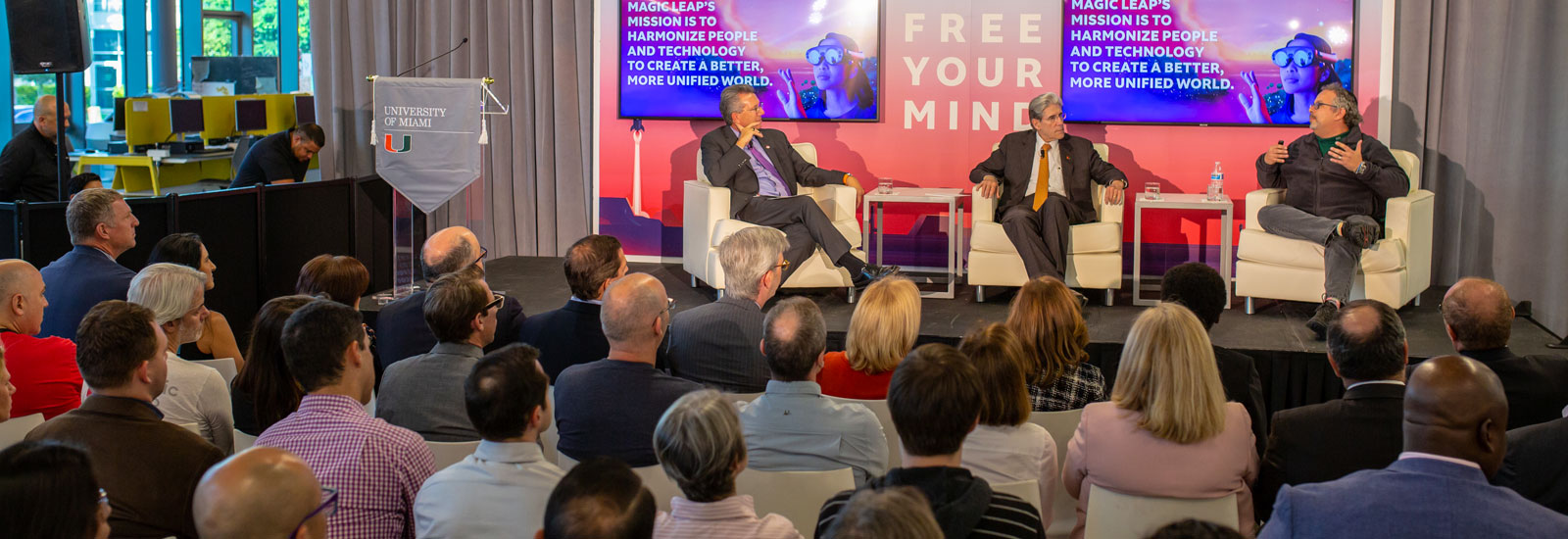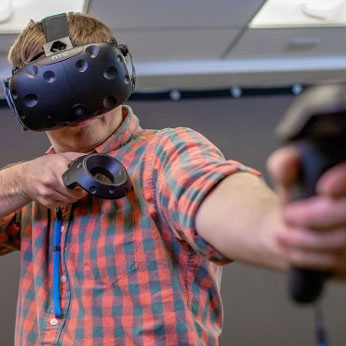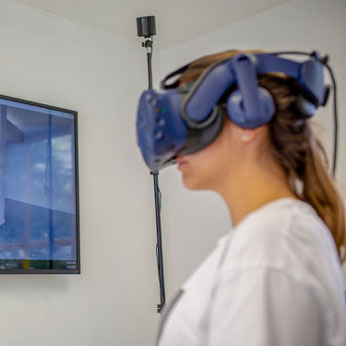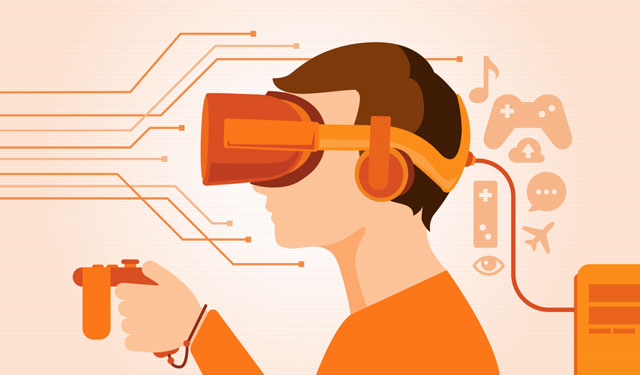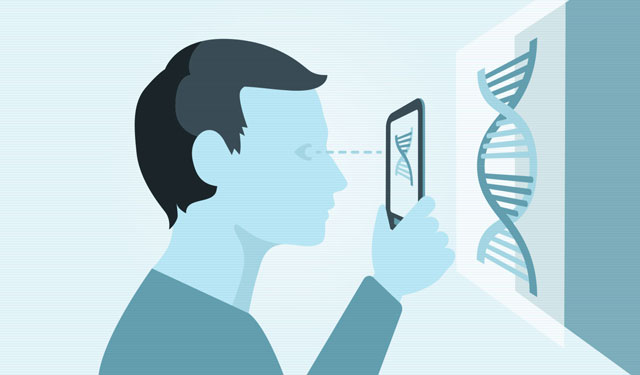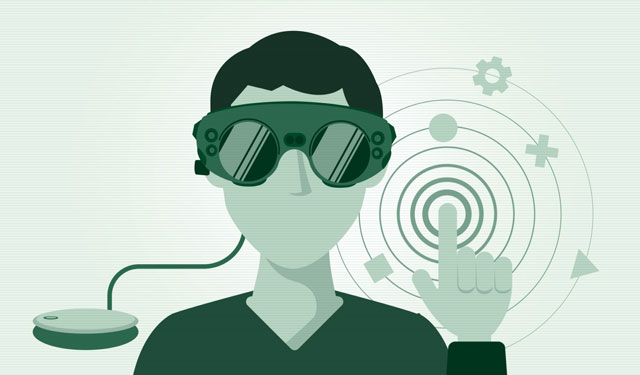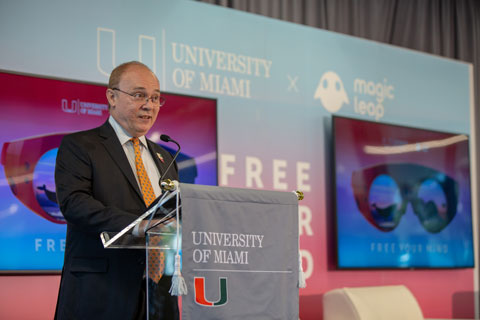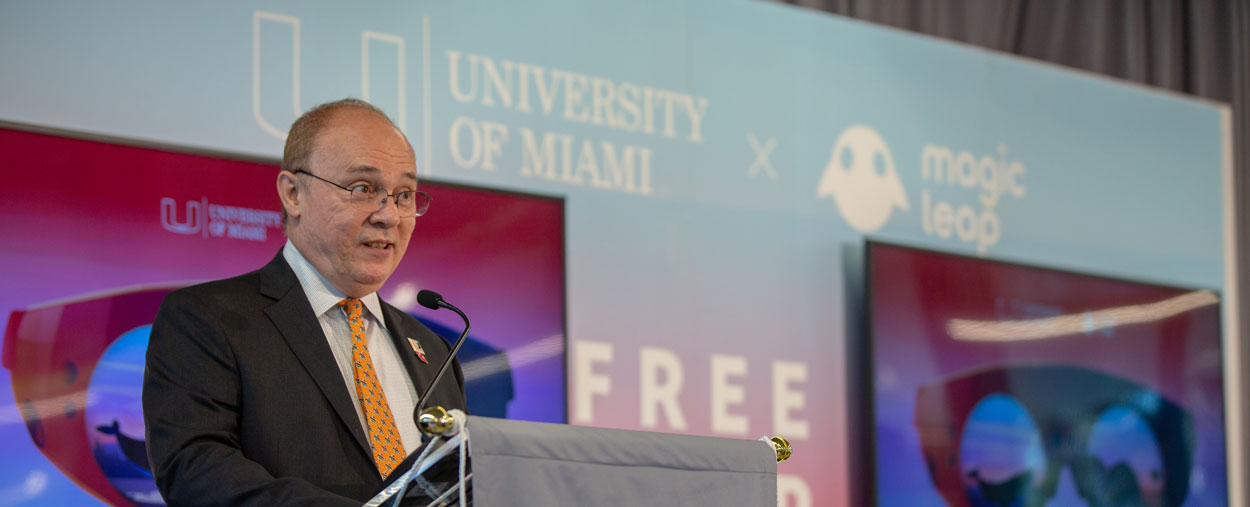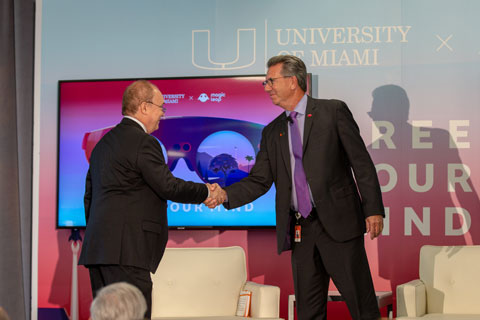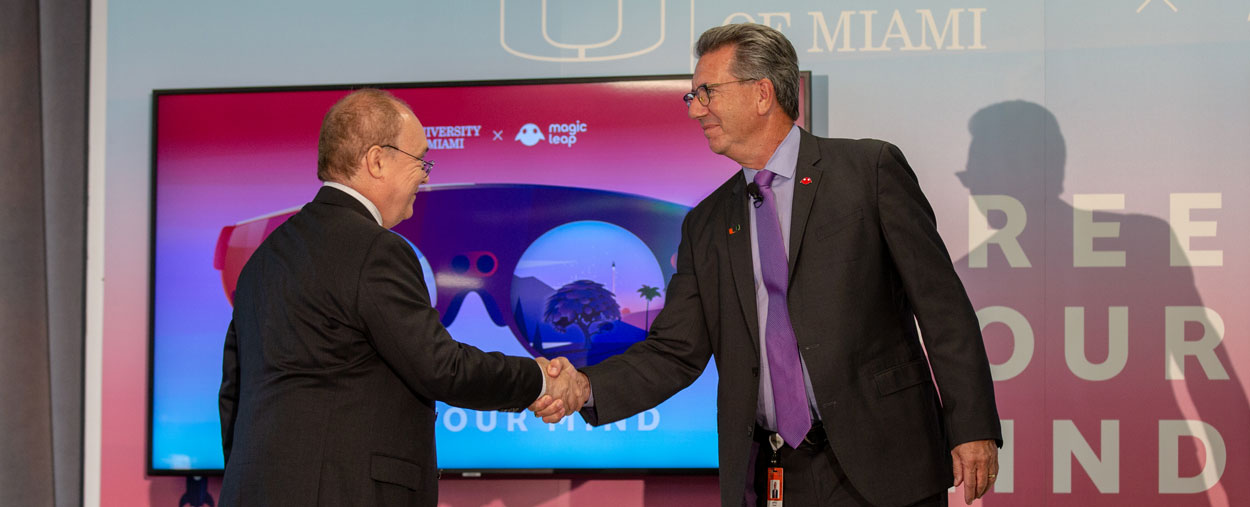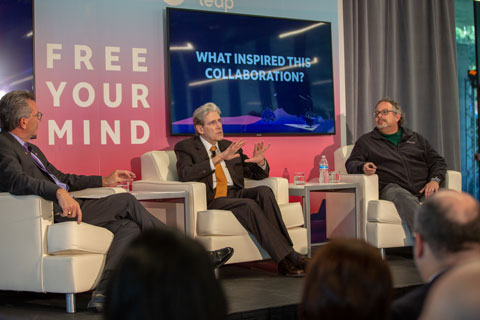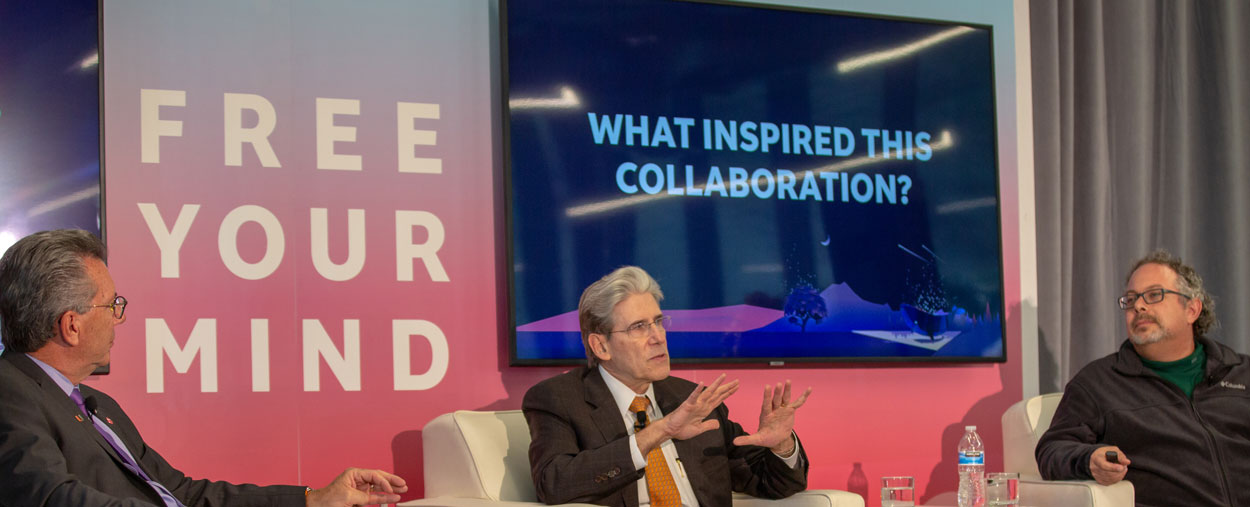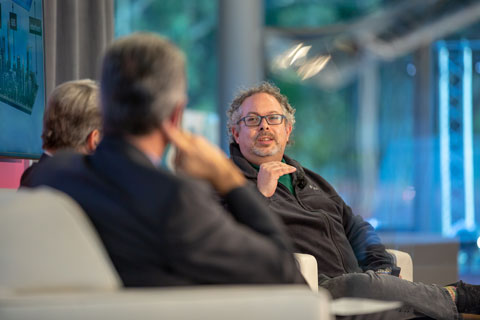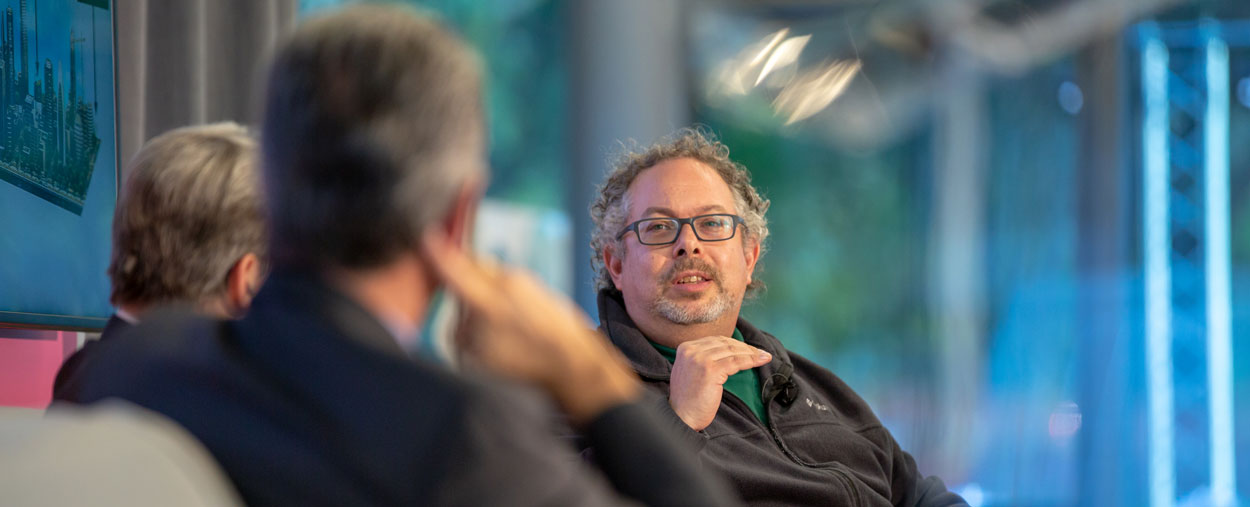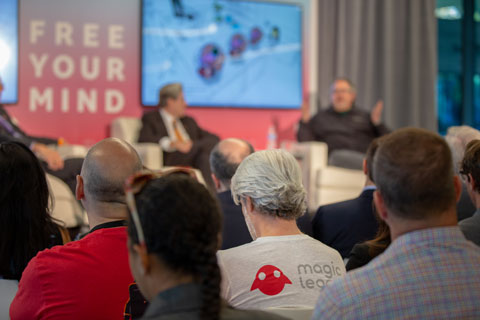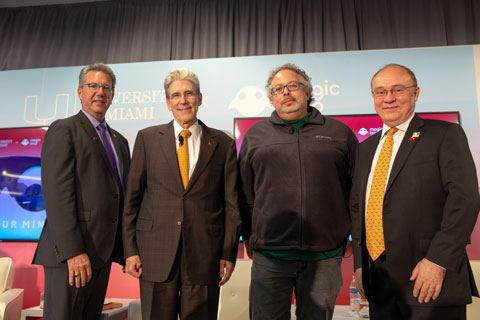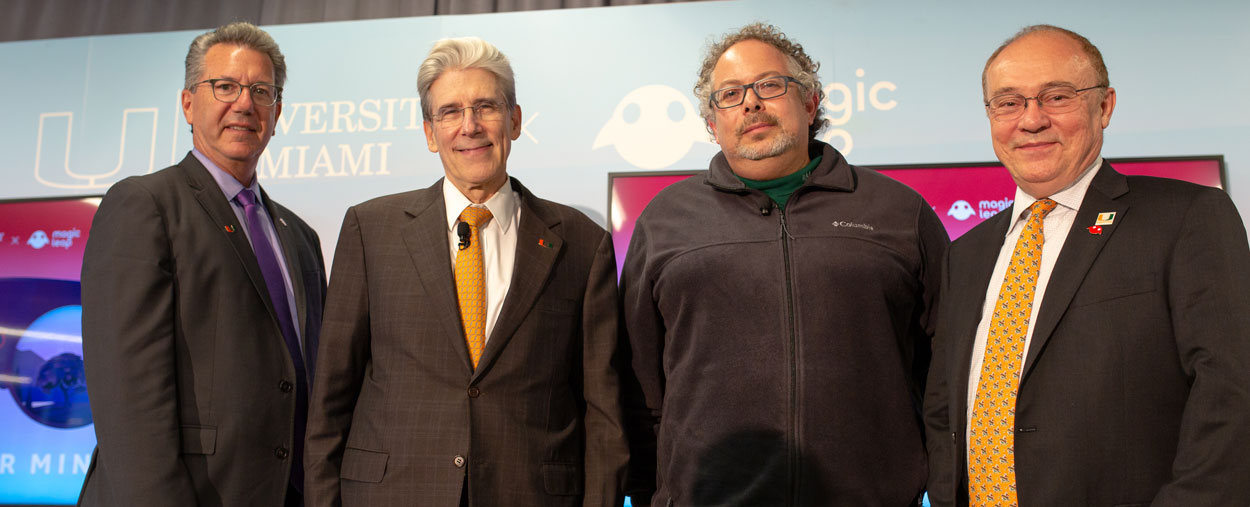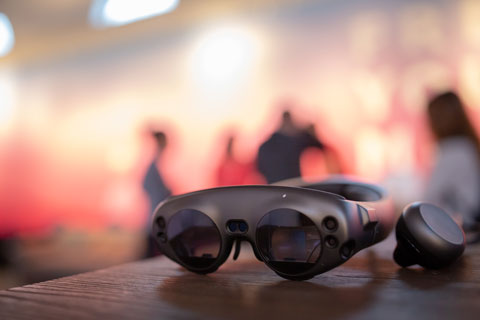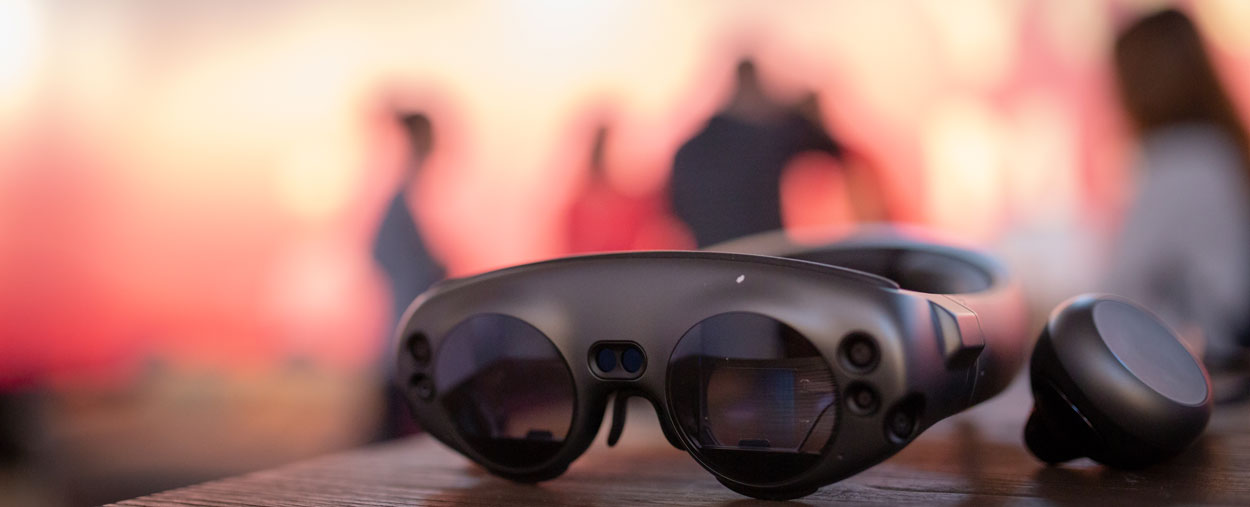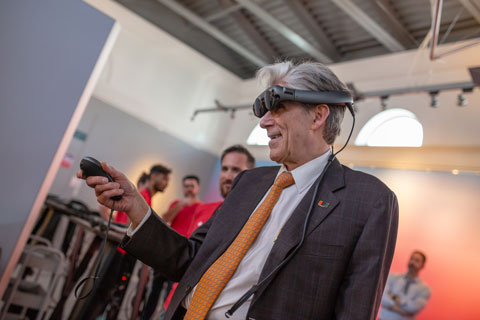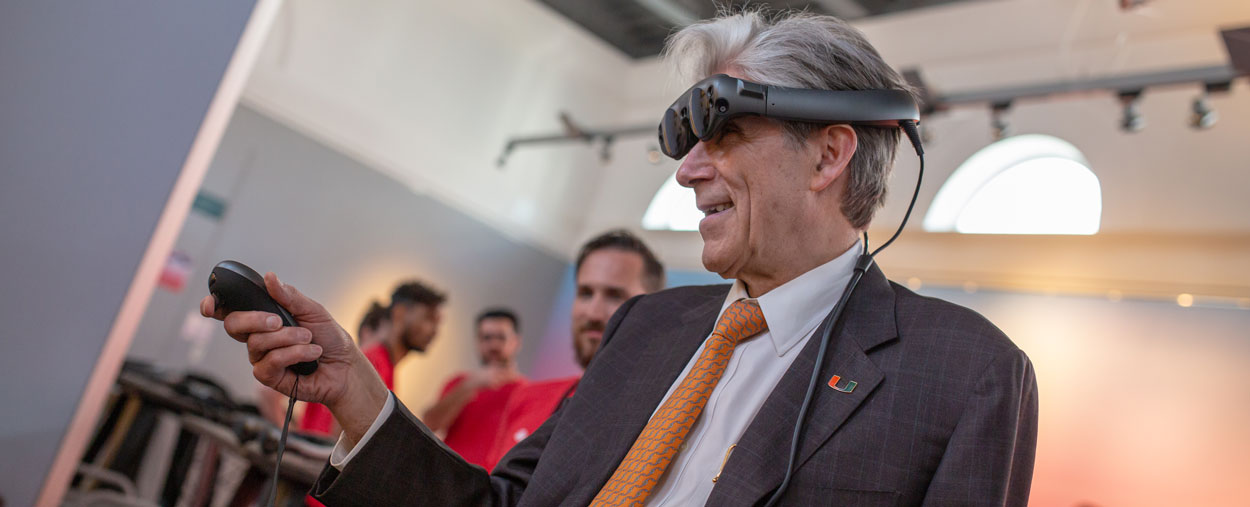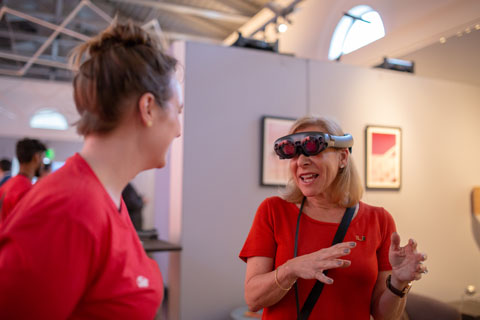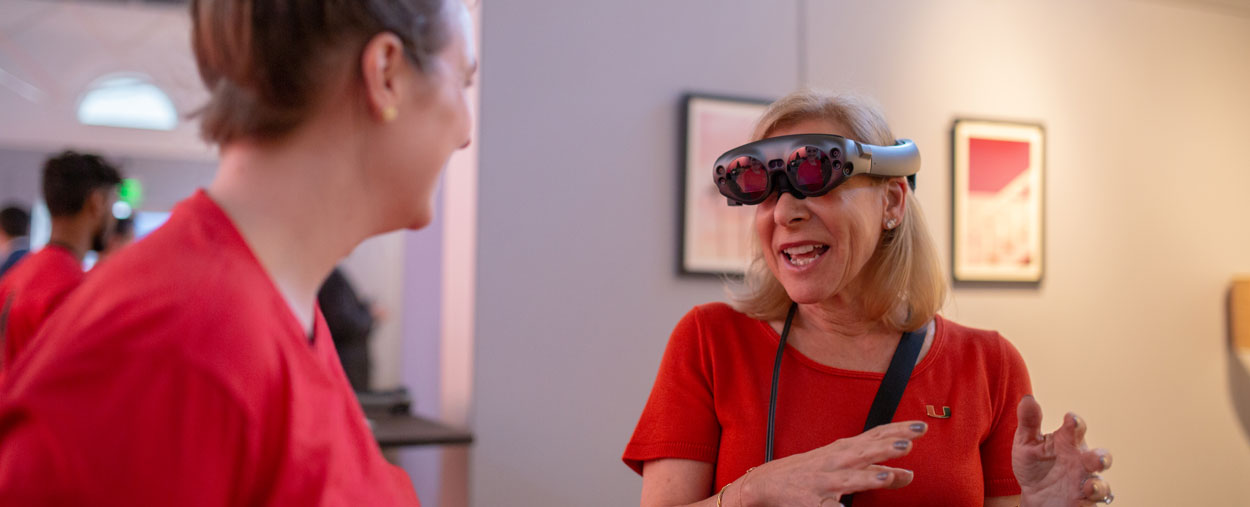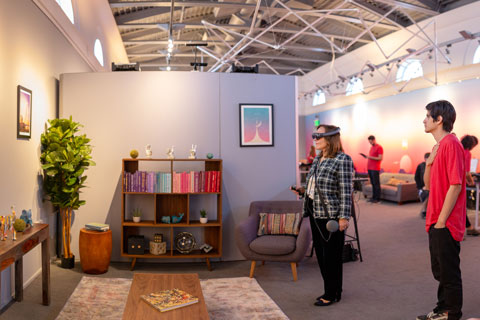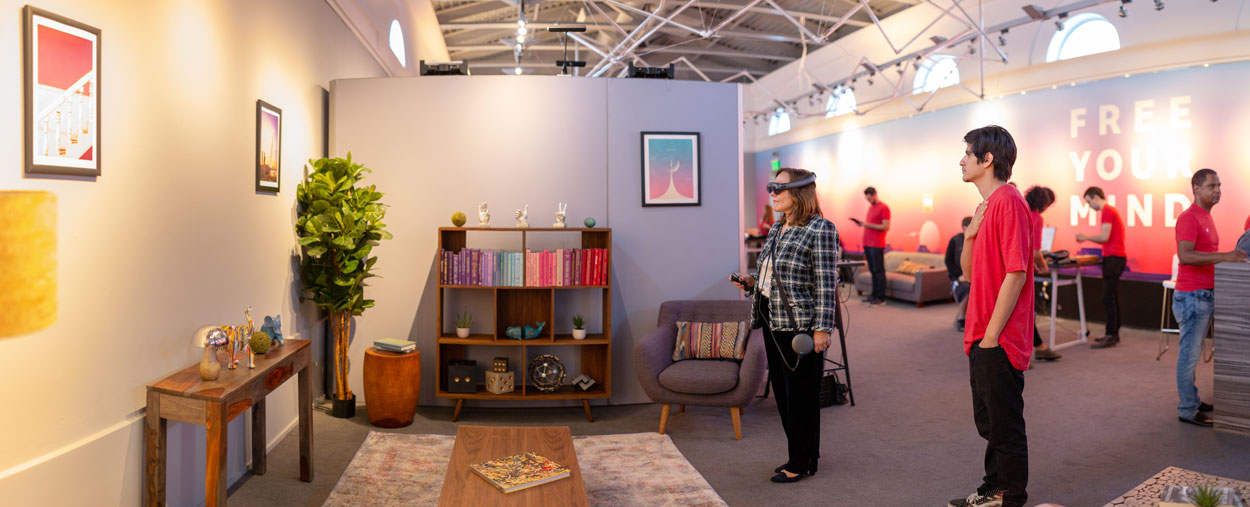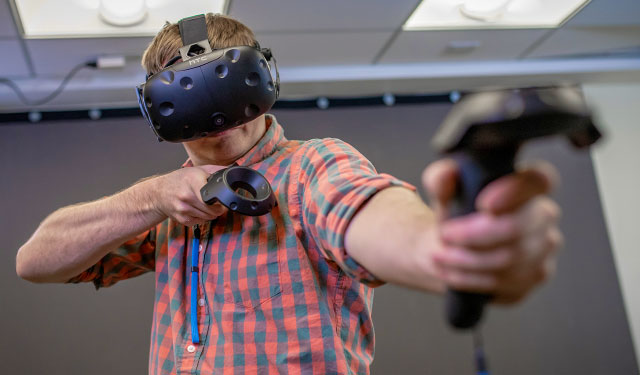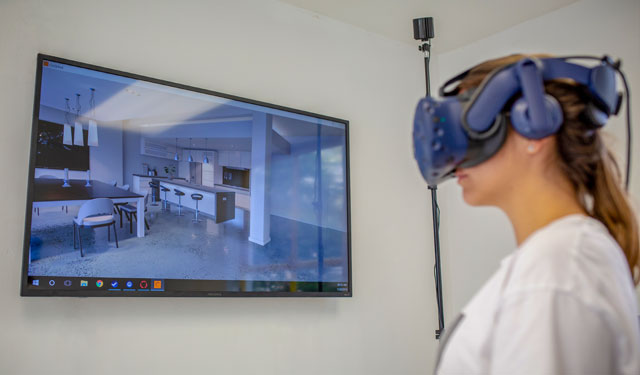by AMANDA M. PEREZ
UM News
11-12-2018
CORAL GABLES, Fla. – Lorena Knezevic envisions using holograms in one of her architectural design classes to construct scale models of skyscrapers and other structures.
“I could see students being able to step into a virtual building and experience a space inside and out,” said the University of Miami School of Architecture graduate student.
Now, thanks to an alliance between UM and entrepreneurial heavyweight Magic Leap, Knezevic’s vision may no longer be the stuff of science fiction.
On Monday, during an event at the Thomas P. Murphy Design Studio Building, UM President Julio Frenk, Magic Leap CEO Rony Abovitz, and UM Provost and Executive Vice President for Academic Affairs Jeffrey Duerk discussed how this alliance, which they’ve called Project Alexandria, will transform learning and make spatial computing an important part of the UM experience.
“In 2007 Apple unveiled the iPhone. The company called it a revolutionary and remarkable product,” Jean-Pierre Bardet, dean of the College of Engineering, said in welcoming guests. “Today there is another revolutionary and magical technology which will also transform everyone’s lives.”
Duerk, who moderated the discussion, said, “As an engineer, I’m particularly gratified that it’s not University of Miami and Magic Leap, it’s University of Miami times Magic Leap,” noting the stage backdrop. “It’s that additional power that we get from the multiplicative effect of both of those.”
Abovitz, the University of Miami alumnus who founded Magic Leap, is the driving force behind the South Florida-based company that is creating the state-of-the-art “mixed reality” glasses. The technology uses spatial computing to blend digital content with the physical environment and enable objects to realistically exist in the world around us.



